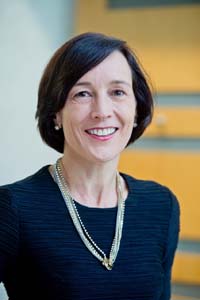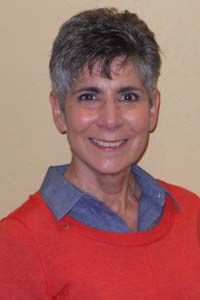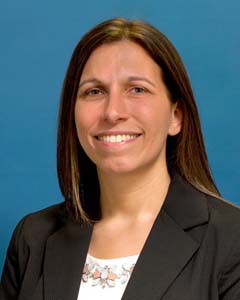We asked the experts who work with California's seniors everyday to tell us:
- What is the biggest challenge facing California seniors today?
- What could help?
Here's what they told us.
Comments were edited for clarity.

We need to make sure the basic needs of seniors in California are being met, including food, housing and financial security. We want to do all we can to keep seniors mentally and phyiscally healthy. We need to provide ways seniors can stay active, including providing opportunities to socialize and participate in activities with friends.
I strongly advocate for minority senior centers, to help seniors stay connected to their language and culture. Those environments can connect them to services and improve the mental and physical health of seniors.

While housing and income insecurity are challenges regardless of age in California, what is unique about the challenge facing California seniors is the potential loss of autonomy and self-determination and the ability to protect oneself against abuse and neglect. Aging is often accompanied by physical and/or mental infirmities — all with the prospect of being victimized, isolated, abandoned or impoverished.
In California, and in the country as a whole, the necessary services and safety nets for at-risk seniors are either non-existent or woefully underfunded.

The biggest challenge facing California seniors today is social isolation or social disconnectedness. In California, one in five seniors live alone. In the entire country, one-third of seniors live alone and 43% feel lonely. Living alone, does not necessarily lead to social isolation or loneliness but it certainly increases risk. Lack of informal opportunities for community building and networking, segregation of people by age groups and break-up or widespread separation of family groups contribute to this phenomenon. Loneliness and social isolation contribute to higher mortality rates and poorer quality of life.
California needs initiatives to connect people from diverse age groups (incentivized living arrangements for younger adults to live with older adults), creation of community commons that celebrate intergenerational engagement, technology-enabled support groups, and bartering/volunteering opportunities that exchange things of value. Creation of age and dementia-friendly built environments will also prevent older adults from becoming captive in their homes. Adaptive technologies and accessible transportation will also foster connection and community building among older adults.

The single biggest challenge facing older Californians in the Central Valley is income insecurity. There are many “tweeners,” people who are near-poor but not poor enough to qualify for governmental assistance. These are the people, who if they do not have family to help, struggle with housing costs, medical expenses and caregiving needs. Rurality further compounds the stresses experienced by income insecurity.
Older adults experience increased isolation. They have limited or no access to transportation, meal sites, doctors and other service providers. Tweeners are at risk for slipping into poverty if they experience major life changes like widowhood and serious medical conditions. The tweener crisis is best exemplified by looking at housing needs. Many of the low income housing apartments for older adults in the Fresno area have two-year waiting lists. The demand for the assisted-living waivers also exceeds supply. Income insecurity underlies most of the challenges experienced by older adults in the Central Valley.
We've all heard the phrase “it takes a village to raise a child,” well it also takes a village to support our older adults. As minimum wage increases, the cost of services will become harder to bare, especially for older adults on fixed incomes. As a community we have many of the solutions in place, but they are not coordinated. Older adults and their families may not be aware of the services, and at times funding is limited.
Older adults need solutions to remain independent at home longer, such as home modifications, home delivered meals and access to transportation. Community solutions which increase socialization, senior centers, meal sites, volunteer programs and low income housing can act as access points to integrate service provision. Colleges and universities can become more involved by supporting students who are caregiving, in a similar manner to how they provide services for students with young children.
On a larger scale, policy solutions focusing on helping older adults afford assisted living, utilize adult day health centers, and providing financial credits for caregiving family members will all help older adults experience a better later life.

There are multiple challenges facing today’s California seniors. We focus on health, finance and insurance, state and local government, housing and transportation and social and community services.
Older adults are becoming the fastest growing population needing consideration to their healthcare needs.
A Master Plan on Aging needs immediate attention that takes into account the five challenges we’ll be facing by 2030’s “silver tsunami.” Plans for Long Term Services and Supports (LTSS) is a major consideration covering issues/needs such as: health, financial, social, community, poverty, homelessness, etc. This Master Plan on Aging needs to be considered or accepted by, not only our state lawmakers, but our local governments, seniors themselves and their caregivers or future caregivers.

California seniors are challenged by the lack of a coordinated long term care system and funded long term care. The lack of a reasonable safety net for chronic health care will be a factor in senior poverty.
Affordable housing is also a significant issue for California’s seniors.
California needs statewide coordinated and integrated health care policies and departments focused on seniors.
The state also needs more public private funding for affordable housing and policies that require a significant portion of new housing development to have affordable units.

In many countries, including the U.S., full-time family caregivers lack of sufficient support for the jobs they must do (e.g., fiscal, emotional, and physical support). Caregivers themselves have a high rate of physical, cognitive and mental health issues much higher than their age-matched cohorts, as caregivers often undervalue their own care in relation to their caregivee.
Exploring the use of technology to help provide support to caregivers has the potential to be hugely beneficial.
In our recent work we explored the design of physically embodied robots which can be given to caregivers/caregivees to have in their homes.
We spent six months co-designing such robots with family members, social workers and others who care for people with dementia. We learned caregivers wanted robots that could both help to support positive moments with their caregivees (e.g., share joy), as well as to support more difficult moments and reduce emotional burden.

The extremely high percentage of income seniors must spend on housing is the biggest challenge facing California seniors.
It is common for an older adult, particularly those living near or below the Federal Poverty Level (FPL), to spend 70% or more of their limited income on rent. More and more older adults who own their homes find themselves “house rich and cash poor” because of property taxes, insurance and the high cost of maintenance. Low vacancy rates exacerbate the situation — meaning higher rents — along with the critical lack of affordable housing options throughout California.
In San Diego, for example, the waiting list for a low income senior to receive a Section 8 voucher is over a decade and waiting lists for affordable housing buildings are almost as long. All of this has caused significant and dramatic increases in the number of homeless older adults on the streets. More than two of five homeless people on the streets of Los Angeles are over the age of 55. In San Diego and San Francisco, that the number is more than a third. Rural communities are not immune and seeing unacceptable increases as well.
Getting help for homeless older adults is often a challenge. Triage assessments for who gets service often minimize age as a factor and skew to chronically homeless individuals. Many older adults are episodically homeless who could be helped at an earlier stage rather than waiting until they qualify as chronic. Even when there are resources available for older adults, the biggest problem is where to find permanent placements because no affordable units are available.
California needs public-private commitment to building affordable housing for older adults, and housing that meets the growing demand from all socioeconomic groups. This includes increasing density along transit corridors, removing bureaucratic impediments, incentivizing developers, and providing the necessary funding — particularly for nonprofit developers — to build more affordable housing. It will require a collective commitment from government and the private sector to increase housing in a thoughtful, sustainable and people-friendly way.